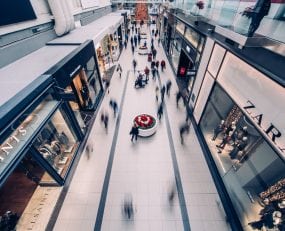
Christmas may seem a long way off but in reality, the festive period is a mere four months away. Already retailers and logistics providers are gearing up for what may be the strangest holiday season to date. Christmas, fortunately, is still expected to be to a big event for retailers however it is unlikely that stores will be crammed full of shoppers rushing around wearing face masks to buy last-minute gifts. Instead, shoppers will most likely be in the comfort of their home leisurely scrolling through the internet.
The Coronavirus pandemic has accelerated the pace of e-commerce whilst simultaneously leaving brick-and-mortar stores bare. For retailers hoping that the festive period would bring shoppers out of hibernation, they are likely to be disappointed. More than a third of US shoppers who normally shop in store for Black Friday have stated that they don’t intend to visit stores this year. During a time when store closures are being announced weekly, it will be imperative for retailers to get creative if they wish to see it through to 2021.
Logistics providers and e-retailers on the other hand are faced with a different challenge. Even before the Coronavirus pandemic shoppers were increasingly turning to online shopping during the festive period. In 2019, 58% of US holiday shoppers made purchases online. With social distancing measures in place and some still fearful of contracting the virus, this figure is expected to grow to approximately 75% of US holiday shoppers in 2020.
In response to a perceived surge in demand, retailers, both online and offline, are trying to spread the demand over several weeks by planning to start promotions earlier than they have previously. Despite these efforts, demand for e-commerce is anticipated to be so great that logistics companies, including FedEx and UPS, have announced that they will be imposing delivery surcharges. In addition to surcharges, UPS is planning to hire over 100,000 seasonal employees to support the anticipated surge in volumes. While FedEx is expanding its Sunday delivery service to cover 95% of the US population and has increased capacity in six of its regional sortation facilities.
Additionally, there is the threat of a second wave of national lockdowns. e-retailers and logistics providers must be prepared to manage a spike in demand. Amazon struggled to maintain its two-day delivery promise at the height of the pandemic long before Christmas was on anyone’s radar. To maintain consumer confidence, it will be imperative that the e-commerce giant is able to fulfil consumer expectations during the festive period.
It is clear that this Christmas season will not be quite as imagined, but then neither has 2020. Shopping habits have fundamentally changed, and more people will turn to online channels to shop. Additional staff and updates to sortation facilities before the festive season is hardly ground-breaking as providers seem to hire record numbers of staff each year. However, with the threat of a second spike and wave of national lockdowns, it is still unknown what the festive season will look like amid a pandemic so only time will tell if companies were adequately prepared.
Source: Transport Intelligence, September 10, 2020
Author: Beth Poole